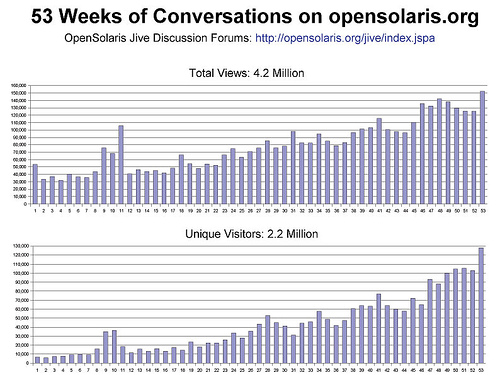Can new Solaris beat Linux in server market?


(The chart showing increased chatter concerning OpenSolaris comes from the blog of Jim Grisanzio, senior project manager for OpenSolaris engineering.)
The new build has a lot of features enterprise managers will love. Virtualization, performance and resource management were emphasized in the 10 8/07 release. There are new containers for Linux applications and full integration with PostgreSQL 8.2, a real enterprise-class database.
The flurry of announcements demonstrate Sun's commitment to expansion in open source while remaining an enterprise vendor for hardware and software. It's a tough balancing act.
For enterprises 10 8/07 has a Large Send Offload feature to send operations to network interface hardware, and Jumbo Frame support for high-speed packet forwarding. The hope is this will sell CoolThreads servers and 10 Gb Ethernet Networking Cards for high-throughput environments like Web farms.
The Linux support is part of Solaris' Brandz initiative, whose description is "intentionally vague" so it might include (cough, Windows, cough) all sorts of interesting stuff.
The free "community build" edition of OpenSolaris is also out, another milestone toward its Project Indiana, a new OpenSolaris binary distribution.
So the development of Solaris toward becoming an open source, enterprise-class alternative to Linux continues. It's an effort with legal, business model, and technical dimensions, as Adam Leventhal's discussion of porting Dtrace to Linux last month made clear.
As one-time New York mayor Ed Koch might say, how they doin'?